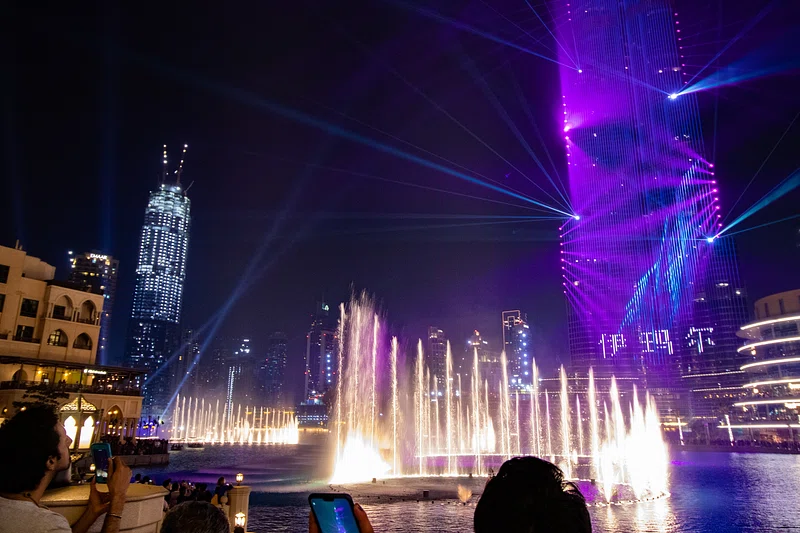
With summer making its grand entrance, many of us are already dreaming of sun-kissed skin and sandy toes, eagerly getting our favorite bikinis ready for those perfect beach days. There’s nothing quite like slipping into your favorite swimwear and feeling that surge of confidence, is there? It’s all about embracing the season and enjoying those much-deserved moments of relaxation and fun.
However, as exciting as it is to plan our warm-weather escapades, it’s also super important to hit pause and think about where we’re actually rocking those fabulous bikinis. Because, let’s be real, while bikinis are a staple in many parts of the world, they’re definitely not universally accepted. Traveling to new destinations, whether abroad or even just to different local spots, means stepping into a mosaic of diverse cultures and expectations, and what flies in one place might be a definite no-go in another.
So, before you pack your bags and head out, let’s dive into the fascinating world of swimwear etiquette. We’re going to explore some key places where your trusty bikini might be seen as out of place, or even downright disrespectful, not just for the sake of avoiding awkward stares but to genuinely protect your social image and show respect for local customs. The reasons can range from deeply rooted cultural or religious beliefs to practical considerations, and understanding these nuances is truly empowering.

1. **Mosques: A Sacred Space for Modesty**
When it comes to visiting a Mosque, or indeed any place of worship under Islam, the rule is crystal clear: bikinis are absolutely not allowed. This isn’t just a suggestion; it’s a fundamental expectation rooted in respect for the sacredness of the space and the spiritual practices taking place within it. The Quran emphasizes modesty for women, and while interpretations vary for daily life, in a Mosque, this translates to covering up significantly.
A bikini, by its very nature, is considered revealing and would be seen as profoundly disrespectful by those praying or worshipping. It simply doesn’t align with the solemn atmosphere and the intention of modesty that defines such holy sites. You should never even entertain the thought of wearing one if you plan on visiting a Mosque, regardless of how quickly you might be passing through.
Visitors are expected to dress modestly, typically covering their head, shoulders, and knees. This is a sign of honor and reverence for the faith and its adherents. Choosing appropriate attire demonstrates an understanding and appreciation of the cultural and religious significance of the location, ensuring that your presence adds to, rather than detracts from, the sanctity of the environment.

2. **Churches: Respectful Attire for Holy Ground**
Similar to Mosques, Christian churches generally have an unspoken, or sometimes explicit, dress code that prioritizes modesty and respect. While there isn’t a blanket Christian prohibition against wearing a bikini in life in general – Christians are typically not prohibited from wearing a bikini for recreation – the context of a church setting is entirely different. You’ll find that in most Christian churches, it’s expected to cover at least your knees and shoulders.
Stepping into a church in a bikini would definitely be seen as inappropriate and disrespectful. It draws attention away from the spiritual purpose of the gathering and can make others feel uncomfortable, as bikini tops can be perceived as sexualized. Even if some more liberal churches might not have strictly enforced dress codes, the general sentiment leans heavily towards conservative attire as a mark of respect for the sanctity of the place.
Frankly, there really isn’t a practical or social need to wear a bikini to a church service or visit. Opting for clothing that provides more coverage—something that reflects thoughtfulness and respect for the communal space—is always the best approach. It’s about honoring tradition and the solemnity of the occasion.

3. **Iran: Where Modesty is the Law**
Iran stands as one of the world’s strictest Muslim countries when it comes to dress codes, particularly for women. Here, the concept of modesty is not just a cultural norm but a legally enforced mandate. Women are absolutely not allowed to show any skin or hair whatsoever in public. This means that wearing a bikini is not merely discouraged; it is strictly forbidden under Iranian law.
The consequences of violating these strict dress codes can be severe, ranging from heavy punishments like lashes to imprisonment. The country also operates under a system of “moral policing,” where morality police are empowered to apprehend individuals they deem not dressed appropriately. This isn’t a situation where you can expect exceptions or leniency; the rules are applied rigorously.
So, if you’re planning a trip to Iran, leave the bikini at home, full stop. The risk of legal repercussions and intense negative social attention is simply too high. It’s imperative to adhere to the local laws and cultural expectations by wearing modest, loose-fitting clothing that covers your head, arms, and legs, ensuring you navigate the country respectfully and safely.

4. **Saudi Arabia: Public Prohibitions and Private Exceptions**
In the Kingdom of Saudi Arabia, the public display of bikinis is strictly forbidden for women. Generally, wearing bikinis in the country is not allowed due to deeply ingrained religious and cultural norms. The dress code in public spaces is highly conservative, emphasizing extensive covering of the body.
However, even in a country renowned for its strict adherence to Islamic dress codes, some rare exceptions have begun to emerge in recent years. Certain private beaches have received permission to allow bikinis, signifying a cautious step towards modernization in specific, controlled environments. Pure Beach in Jeddah, for example, is noted as one such place where men and women can swim together without separation—a truly significant departure from traditional norms.
It is crucial to understand that these private beaches are still very few and represent exceptions rather than the rule. You cannot assume that bikinis are acceptable on any beach in Saudi Arabia. Additionally, bikinis might be tolerated in private pools within hotels or in the special “compounds” established for Westerners. Even then, it’s always wise to inquire beforehand, as not all hotels permit bikini wear. When in doubt, err on the side of caution and modesty.

5. **Qatar: Resort Relaxation vs. Public Prudence**
Qatar, like many of its Middle Eastern neighbors, operates under a strong framework of Islamic cultural norms, which significantly influences public dress codes. Bikinis are not allowed in public spaces, including public beaches. If you were to visit a public beach in Qatar, you would typically encounter clear signage specifying the appropriate attire for both men and women, and a bikini would definitely not be on that approved list.
The reasoning here is rooted in cultural respect and maintaining modesty in public view. The expectation is that individuals, particularly women, will dress in a way that respects local customs and avoids drawing undue attention. This means covering up adequately when out and about, especially in general public areas.
However, there’s a distinct difference for tourists within the confines of private resorts or hotel pools. In these dedicated tourist zones, you are generally fine wearing a bikini. These areas are designed to cater to international visitors, and the dress code is more relaxed within their boundaries. But remember, the moment you step outside your resort’s private facilities and into the broader Qatari public, you must revert to respectful, modest attire to honor the local culture.

6. **Pakistan: A Question of Cultural Sensitivity**
While there isn’t a specific law in Pakistan explicitly banning the use of bikinis, the cultural landscape paints a very clear picture: bikinis are not a common sight, nor are they considered appropriate in public settings. Locals will often advise strongly against wearing them in public, and for good reason. The bikini is largely viewed as a Western import and simply doesn’t align with traditional Pakistani culture.
Public displays of so much skin are generally considered inappropriate and can lead to significant negative attention or stares from locals. It’s not about legal prohibition as much as it is about deep-seated cultural expectations around modesty and dress. To avoid making others uncomfortable or drawing unwanted scrutiny, it’s best to err on the side of cultural sensitivity.
That said, if you find yourself in a private setting, such as a hotel pool or a private resort, you’ll likely encounter no issues wearing a bikini. These spaces often cater to a more international clientele and offer a more relaxed atmosphere. The key is to be acutely aware of your surroundings and make conscious choices with your clothing to ensure you’re not inadvertently offending anyone or misrepresenting yourself within the local context.

7. **Dubai’s Public Areas: Beyond the Beach Clubs**
Dubai is a fascinating blend of traditional Muslim culture and a highly “westernized”, modern metropolis, which can make understanding its dress code a bit tricky. While the city embraces a lot of international influences, especially in its thriving tourism sector, it remains a Muslim country with underlying conservative principles. This means that while laws and rules exist, their enforcement can sometimes vary, leading to a need for careful judgment.
When it comes to bikinis, there’s a clear distinction: they are widely accepted and used in designated areas such as beaches, resort pools, and private beach clubs. These are the natural habitats for swimwear, and you’ll see plenty of people enjoying them without issue. However, the moment you step away from these specific zones and into other public areas, like shopping malls, city streets, or public parks, the rules change significantly.
Wearing a bikini in general public spaces in Dubai would instantly attract attention, and not the good kind. The context explicitly mentions a personal experience where wearing a bikini in such an area led to the police showing up. This serves as a stark reminder that while Dubai is welcoming to tourists, respecting its cultural norms—which include modest dress outside of specific recreational areas—is paramount to a smooth and enjoyable visit, and certainly to protecting your social image. Always change into appropriate street wear when leaving the beach or pool.

8. **Bali: Tropical Paradise with Sacred Sensitivities**
When you picture Bali, it’s often a vision of stunning beaches, vibrant culture, and endless summer vibes. And guess what? Bikinis are absolutely a staple here! It’s a super famous tourist destination in Indonesia, drawing people from all over the world who come to surf, soak up the sun, and simply unwind. In fact, many visitors happily spend most of their day in swimwear, embracing the island’s laid-back beach culture with open arms.
The island truly embraces its role as a global hotspot, meaning you’ll want to pack a couple of your favorite bikinis for your trip – you’ll definitely need them for those idyllic beach and pool days! The general atmosphere is incredibly welcoming and relaxed when it comes to swimwear on its beautiful shores and around resort pools. You’ll see tourists enjoying themselves freely, making the most of Bali’s tropical climate.
However, even in this tropical haven, there are important cultural nuances to keep in mind, and it’s here that thoughtful dressing truly shines. While bikinis are celebrated on the beaches and in private leisure areas, the scene changes significantly when you step into a temple or any other sacred cultural site. In these revered places, the expectation is to cover up your body respectfully, often with a sarong and sash provided at the entrance.
This isn’t about restriction; it’s a simple but profound way to honor local traditions and show your appreciation for Balinese Hinduism. Choosing appropriate attire in sacred spaces ensures your presence adds to, rather than detracts from, the spiritual atmosphere. Understanding these specific contexts means you can enjoy every aspect of your visit, blending seamlessly into both the playful beach scenes and the solemn cultural experiences.

9. **Indonesia: Balancing Tourism and Tradition with Care**
Indonesia, home to the world’s largest Muslim population, presents a fascinating case study in balancing deeply rooted cultural and religious norms with the demands of a thriving international tourism industry. You might initially think that, given its predominantly Muslim context, bikinis would be largely off-limits, much like in some other Muslim-majority nations with stricter dress codes. This expectation is understandable, considering the emphasis on modesty in Islamic teachings.
However, Indonesia made a significant and rather pragmatic decision about 13 years ago, formally allowing bikinis in specific tourist areas. This forward-thinking move was explicitly aimed at protecting its vital tourism industry, recognizing its economic importance and the expectations of international travelers. The government’s reasoning was clear and direct, stating that “Tourists will be able to wear bikinis in special tourist areas, such as in Bali, so Indonesia’s tourism industry won’t be hurt by this legislation.” This highlights a deliberate effort to create welcoming zones for international visitors without imposing universal restrictions.
This policy reflects a smart, adaptive approach, recognizing the economic benefits of tourism while still acknowledging the country’s diverse cultural and religious fabric. It effectively creates a dual standard where tourists can enjoy their swimwear in designated, clearly marked areas, ensuring their comfort and enjoyment. Simultaneously, more conservative dress codes remain relevant and expected in other public or non-tourist-centric spaces across the archipelago.
Therefore, while celebrating your freedom to wear a bikini in places like Bali, it’s always wise to remember that venturing beyond these designated “special tourist areas” into local towns or less tourist-focused regions will require a thoughtful shift back to more modest attire. It’s all about understanding these specific allowances and respecting the local context and customs beyond them, ensuring you navigate the country with both style and sensitivity.

10. **The Maldives: Picture-Perfect Resorts, Public Prohibitions, and Tourist Privileges**
When the Maldives comes to mind, images of breathtaking crystal-blue waters, luxurious overwater bungalows, and, naturally, bikinis often follow. It’s the quintessential paradise for many, often seen as the ultimate bikini-friendly destination. Yet, there’s a crucial detail that often gets overlooked by excited travelers: the Maldives is an Islamic country, and this fundamental fact significantly influences local dress codes and expectations.
While your Instagram feed might be flooded with stunning bikini shots from the Maldives, often taken at lavish resorts, it’s actually “illegal to wear a bikini to a public beach in the Maldives.” This might come as a surprise, given the widespread imagery, but it speaks to the underlying conservative values and religious adherence prevalent throughout the local community. It underscores the importance of not assuming universal permissiveness.
However, don’t fret – there’s a very good reason for all those gorgeous photos, and it lies in a clear distinction the country makes for its tourism sector. “There are special tourist beaches and resort where wearing bikinis are allowed for tourists, but never for locals.” This means that while local Maldivians adhere to more modest attire in public, international visitors can freely enjoy their swimwear within the confines of private resorts and specifically designated tourist beaches.
The takeaway here is to always be respectful of these distinctions and understand that for the local population, bikini wearing in public is the exception, not the rule. While you’ll have plenty of opportunities to rock your swimwear in approved areas, embracing a modest cover-up when visiting local islands or public spaces beyond the resorts is a sign of cultural sensitivity. And one more crucial point to note: “Going swimming or tanning topless is never allowed in the Maldives,” even in tourist-friendly zones.

11. **Morocco: A Tapestry of Regional Dress Codes and Cultural Sensitivity**
Morocco, a beautiful North African country with a rich Islamic heritage, offers a fascinating study in regional variations when it comes to bikini etiquette. It’s certainly not a simple ‘yes’ or ‘no’ answer, as the acceptance of swimwear can differ significantly depending on where you are in this diverse nation. This complexity means travelers need to be particularly aware and adaptable.
While “bikini wearing is allowed in some places in Morocco,” it’s absolutely vital to be aware that not all areas share this relaxed stance. Generally, you’ll find that “you are allowed to wear a bikini at your hotel or resort in Morocco but never outside or at any beaches.” This clear demarcation is essential; it protects both your comfort as a tourist within private leisure spaces and respectfully upholds local sensibilities in public areas.
For instance, major tourist hubs like “Marrakech and Agadir’s tourist areas” are generally more accepting of bikinis within resort perimeters, catering to an international clientele. However, if your travels take you to “more conservative areas such as Rabat or Fez,” or indeed to any public beach frequented by locals, modesty is paramount. The cultural expectations shift considerably, and what’s acceptable in a resort is not in a public square.
As a Muslim country, Morocco adheres to stricter clothing rules than some other regions, and these rules are often observed out of deeply ingrained tradition and respect. Therefore, a little research on your specific destination within Morocco and a quick inquiry beforehand are always the smartest moves to ensure a smooth, enjoyable, and most importantly, respectful experience. It’s about being an informed and considerate visitor.

12. **Malaysia: Tourist Comfort Meets Local Norms in a Vibrant Nation**
Malaysia, another vibrant Muslim country in Southeast Asia, echoes a familiar refrain when it comes to bikinis: it’s a tale of two different expectations, depending on whether you’re a local or a tourist, and crucially, where you happen to be. This duality is an important aspect that savvy travelers always keep in mind to navigate the cultural landscape gracefully.
If you’re a local Malaysian, or if you’re venturing onto a public beach, chances are that wearing a bikini is “most likely not allowed and would be considered frowned upon.” The societal norms throughout the country lean towards more modest attire in general public spaces, reflecting Malaysia’s strong cultural and religious values. It’s about respecting the collective comfort and expectations of the community, which values conservative dress.
However, for international tourists, the situation shifts considerably and becomes much more relaxed within specific, designated environments. “If you are a tourist in Malaysia and are staying at a resort, hotel pool, or private beach, there will be no problem wearing a bikini.” These dedicated zones are meticulously designed to cater to international visitors, offering a relaxed environment where swimwear is perfectly acceptable and widely seen.
It’s a brilliant example of how countries adapt to welcome global guests and support their tourism industry while still maintaining core cultural principles in broader public life. So, when packing for Malaysia, plan to bring your favorite bikinis for resort-side lounging, but also remember to pack appropriate cover-ups for exploring cities and local areas. It’s all about being contextually aware and respectful, ensuring a harmonious travel experience for everyone involved.

13. **Sri Lanka: Unspoken Rules and Quiet Preferences for Public Decorum**Sri Lanka, often dubbed the “Pearl of the Indian Ocean,” might not have explicit laws banning bikinis, but its cultural landscape quietly and politely guides dress choices, especially in public settings. You’ll find that “the bikini is not a common sight in Sri Lanka.” This observation is key to understanding local expectations.
Sri Lanka, often dubbed the “Pearl of the Indian Ocean,” might not have explicit laws banning bikinis, but its cultural landscape quietly and politely guides dress choices, especially in public settings. You’ll find that “the bikini is not a common sight in Sri Lanka.” This observation is key to understanding local expectations.
Instead, you’re “more likely to see women wearing one-piece swimsuits or sarongs wrapped around their bikini bottoms,” indicating a general preference for more coverage in public settings, even at the beach. This isn’t about legal prohibition; it’s about deeply ingrained social norms and expectations that prioritize modesty and avoid drawing undue attention in a society that values decorum.
While there are “no laws specifically prohibiting the use of bikinis in Sri Lanka,” they’re generally “not commonly seen or worn in public.” This subtle distinction means that while you might technically be able to wear one, you might inadvertently stand out, attract unwanted stares, or even make locals feel uncomfortable. Cultural sensitivity often means aligning with unspoken rules.
For those staying at a “resort or hotel with a private beach or pool,” wearing a bikini will typically pose “no problem.” These enclosed, tourist-oriented environments offer a more relaxed approach to swimwear, catering to international guests. However, if your plans involve public beaches or venturing into general public spaces, adopting a more conservative approach to your swimwear, such as a one-piece or covering up with a sarong, is a thoughtful way to show respect for local customs and ensure a comfortable and unimposing experience for everyone.

14. **Twitch: Navigating Swimwear in the Digital Streaming Arena**
Moving beyond physical locations, the dynamic digital realm also has its own evolving set of guidelines when it comes to swimwear, and Twitch, the massively popular live streaming platform, has had quite a journey with the “bikini” topic. It’s been a “hot one” indeed, sparking extensive discussions and debates as streamers explored, and sometimes pushed, the boundaries of its terms of service.
For a significant period, there was a noticeable grey area where “it was long seen as okay to stream in a bikini if it ‘suited the situation’.” This ambiguity led to some rather creative and, at times, comical interpretations by streamers. You’d find them “simply sitting in a kids swimming pool to be able to get away with using a bikini properly,” using contrived scenarios to justify their attire. This clearly highlighted a tension between the platform’s community guidelines and users’ ingenious methods of interpretation.
However, the platform has recognized and addressed these challenges. “Now it seems like Twitch has gotten around to fixing even these streams and bikinis are not as much of a ‘problem’ on Twitch anymore.” This signifies a significant tightening of guidelines and more consistent enforcement, aimed at preventing the exploitation of loopholes and ensuring that the platform maintains appropriate content standards for its broad audience.
This evolution on Twitch is a powerful reminder that even in virtual spaces, community standards and platform policies are constantly being refined and strictly dictate what’s acceptable. As a creator, understanding and adhering to these guidelines isn’t just about avoiding penalties; it’s about contributing to a positive and respectful online environment for all viewers and participants. The digital world has its own unique form of etiquette.

15. **Tinder: Showcasing Your True Self (Responsibly) in the Dating Game**
When it comes to your online dating profile, specifically on widely used platforms like Tinder, the landscape for bikini pictures is refreshingly different and generally much more permissive than public physical spaces. In fact, for many, it’s not just allowed, but “absolutely fine to have bikini pictures on your Tinder profile!” This platform encourages a sense of authenticity and personal expression, letting your personality and lifestyle shine through.
The whole point of your profile pictures on a dating app is to “give potential matches a sense of who you are and what you’re like.” If you genuinely “enjoy spending time in a bikini” as a part of your lifestyle, perhaps enjoying beach vacations or poolside relaxation, then by all means, “go ahead and show that off!” It’s about presenting an accurate, appealing, and inviting representation of yourself to attract compatible connections who appreciate your interests.
However, while embracing your swimwear style on Tinder, it’s also a savvy move to remember to “make sure that the rest of your profile is filled out so that people know that there’s more to you than just your bikini pictures.” A well-rounded profile, filled with engaging text and diverse images, demonstrates personality, interests, and depth. This ensures that you’re seen as a multifaceted individual with a rich life, rather than just a single, surface-level image. It’s all about showcasing your best, most complete self in a positive and engaging way to truly stand out.
Navigating the world of swimwear etiquette, whether you’re jet-setting across continents or simply scrolling through social apps, truly comes down to a few core principles: awareness, respect, and a generous sprinkle of common sense. Our journey has taken us from sacred sites to bustling digital streams, revealing that while bikinis are a beloved symbol of freedom and fun for many, their acceptance is deeply contextual. The world is a beautiful mosaic of cultures, beliefs, and digital norms, and understanding these nuances isn’t just about avoiding an awkward moment or a legal tangle. It’s about enriching your experiences, protecting your social image, and connecting with the diverse world around you in a thoughtful, empowering, and truly modern way. So go forth, embrace your style, and remember to always dress for the occasion, wherever that occasion may be!



